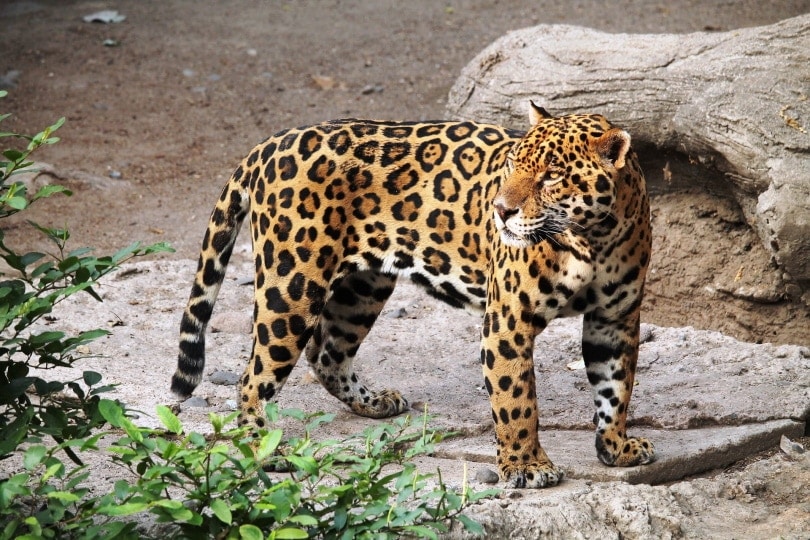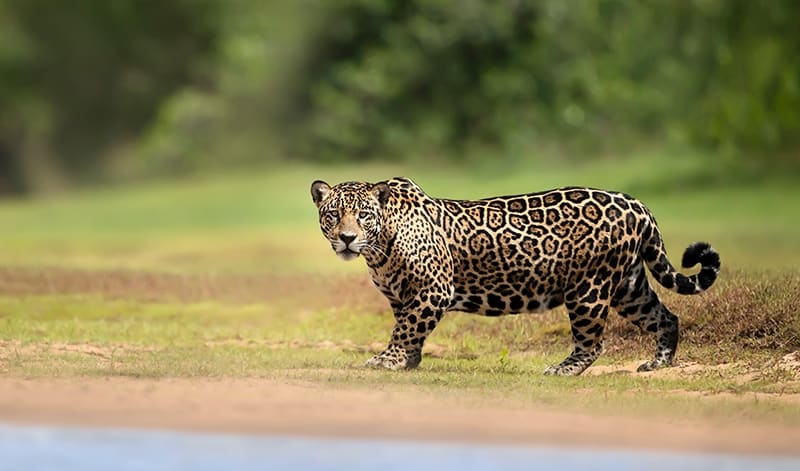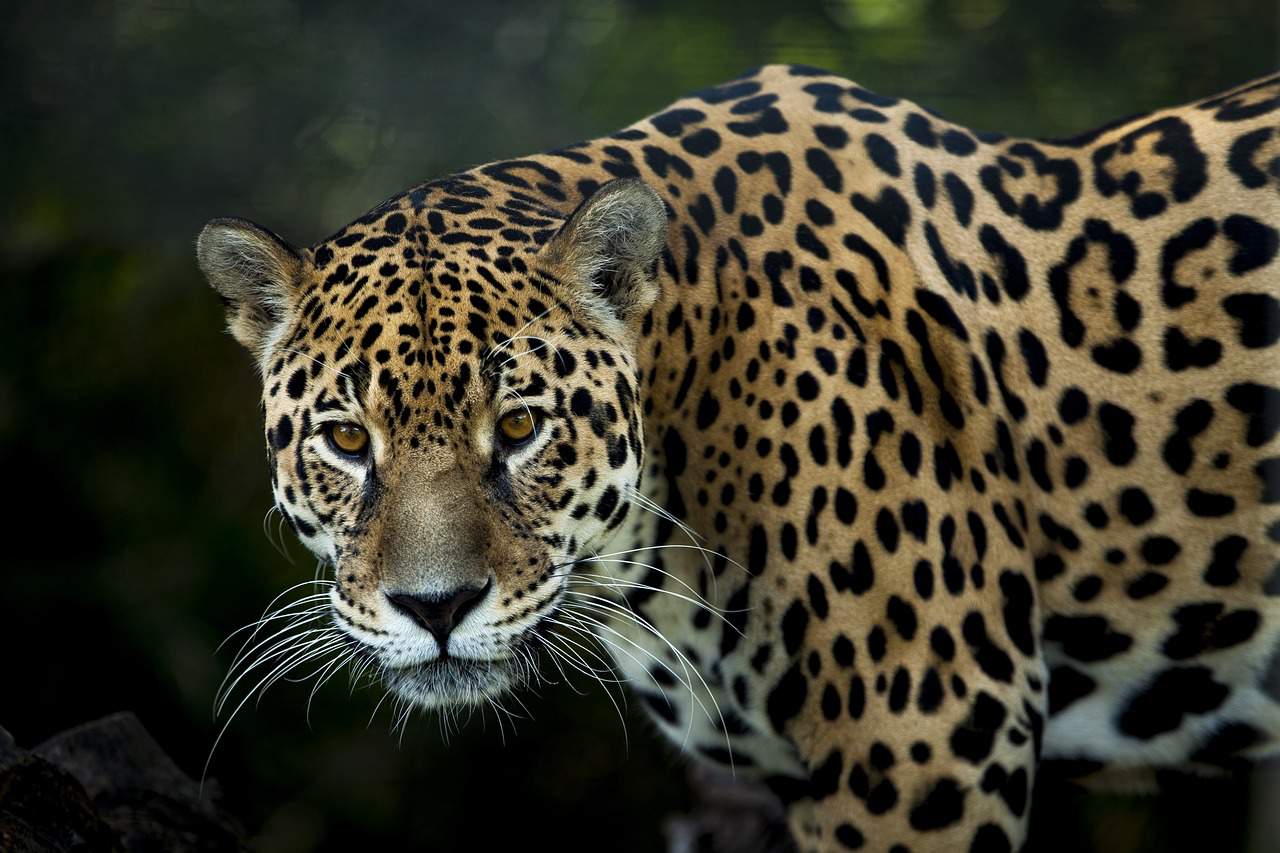The jaguar gets its name from an old Latin American word ‘yaguar’ which means ‘he who kills with one leap’. This refers to the fact that they kill their prey quickly, sometimes instantaneously with only one bite. They are at the top of the food chain, and are vulnerable only to Anacondas or Caimans when young. Jaguars are very large exotic cats. In fact, they are the largest cats that inhabit North, South, and Central America! They are the third largest cat species in the world, being smaller only than tigers and lions.
It is believed that jaguars will become endangered if conservation efforts are not undertaken soon. Right now, they are listed as Near Threatened on the IUCN (International Union for Conservation of Nature and Natural Resources) Red List.
The Jaguar Panthera onca is one of several large cats belonging to the Panthera genus. Other commonly known cats in this genus are lions, tigers, and leopards. The Jaguar and the Leopard look very similar and it can be hard to tell apart. The Jaguar is the only one living in the Western hemisphere however. So if you run into a large spotted cat in North America, you can be sure it is a jaguar and not a leopard!
Jaguars can reach 350 pounds, 6.5 feet in length (excluding their tail), and 2.5 feet in height. Being great swimmers and loving water, these cats usually prefer humid environments, such as rainforests and swamplands. However they can also be found on grasslands and in drier forests. An Interesting Fact: Jaguars have very strong jaws! Even for large cats, these guys have quite the bite. This enables them to easily and effectively kill their prey. These powerful jaws are also useful in piercing the shells of reptiles, such as tortoises and alligators. They are carnivores and their diet consists of just about any animal they can get their jaws on. Larger prey is usually preferred if available, however. Jaguars are solitary creatures as adults and spend most of their time in territory they have staked out for themselves.

Concern for Jaguars is steadily increasing. Three main problems are the cause of declining Jaguar populations.
1. Their natural habitats are shrinking.
This is mostly due to fragmentation of their environments. As deforestation happens more and more to create room for agriculture and homes, and more major highways are constructed, the jaguars’ homes are compromised. They are no longer able to travel over large areas or breed as effectively because their access to other jaguars are restricted. This also leads to not as much diversification in the gene pool. In the United States, most Jaguars are already gone. However, there is believed to be a breeding population in Southern Arizona. In 1995, Jaguars became protected under the Endangered Species Act in order to stop people from shooting them for their pelts.
2. Their supply of natural prey is shrinking.
People hunt many of their prey animals, such as deer and pigs, which reduces their availability to the cats. The prey animals are also losing their habitats, for much the same reasons as the jaguars are.
3. Jaguars are being killed by people.
The reasons vary, from farmers/ranchers killing them for preying on their livestock, to Jaguars being deliberately poached to sell their pelts for profit. But these deliberate acts of killing jaguars are contributing to their decline.
Some organizations have recognized a need to project large cats everywhere and have taken steps to set up programs to do just that. One such organization, Panthera, has set up a program called the Jaguar Corridor Initiative. The primary purpose of this Initiative is to provide “corridors” or protected areas through human developments to connect one wild area to another. These corridors can be through a variety of different areas. Agriculture plantations, ranches, and people’s personal properties can all act as corridors. So far, this program seems to be producing positive results. Jaguars are able to safely pass through developed areas to hunt, breed, and live.

Panthera has another program, the Pantanal Jaguar Project. This one primarily focuses on educating local farmers and ranchers who reside in the Pantanal flood lands to help them reduce conflicts between the Jaguars and the cattle. This theoretically helps reduce the rates at which the cats are killed. Panthera is working with many of the South and Central American governments to monitor Jaguar populations and take motions to conserve them. The Cockscomb Basin Wildlife Sanctuary and Jaguar Preserve was opened in 1986 in Belize with the help of its government. This sanctuary helps protect around 200 Jaguars who live in the area.
Jaguars, like all large wild cats, are part of this world and help keep our ecosystems in check. There is great benefit in making sure they are protected and do not go extinct!
Featured Image Credit: Nickbar, Pixabay
